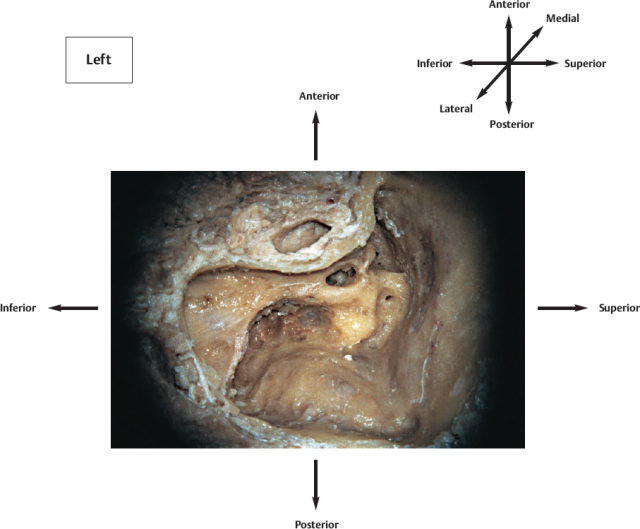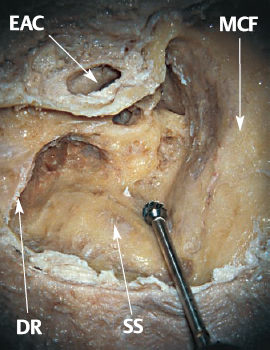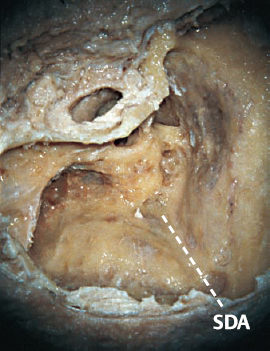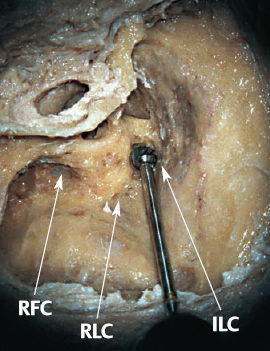9 Extended Cortical Mastoidectomy Enlargement of the cortical mastoidectomy until all the neighboring structures have been completely skeletonized. There is no specific classification or terminology for this procedure in the surgical literature. It may be called extended cortical mastoidectomy. This procedure is an intermediate stage in neurotologic procedures such as translabyrinthine surgery. It may be also carried out during intact canal wall surgery for chronic otitis media. Dissection is continued in the same bone in which a cortical mastoidectomy, posterior tympanotomy and epitympanotomy have been carried out. The dural plates of the middle cranial fossa and sigmoid sinus, and the digastric ridge have already been exposed. The bone around the sinodural angle is carved out with a medium-sized cutting burr. II: 3–4mm cutting and diamond burrs MIL: SS and MCF dural plates DR: Digastric ridge EAC: External auditory canal MCF: Middle cranial fossa (dural plate) SS: Sigmoid sinus (dural plate) The bone at the sinodural angle has been drilled and the sinodural angle skeletonized. It is important to keep in mind that intracranially this angle corresponds to the superior petrosal sinus. SDA: Sinodural angle In the next stage, the interlabyrinthine, retrolabyrinthine, and retrofacial cells are exenterated by means of differentsized cutting burrs. II: 2–3mm cutting burr MIL: Hard bone of labyrinth ILC: Interlabyrinthine cells RFC: Retrofacial cells RLC: Retrolabyrinthine cells Definitions and Tips
Definition
Indications
Anatomical Orientation

Surgical Steps



Extended Cortical Mastoidectomy
Only gold members can continue reading. Log In or Register to continue

Full access? Get Clinical Tree



